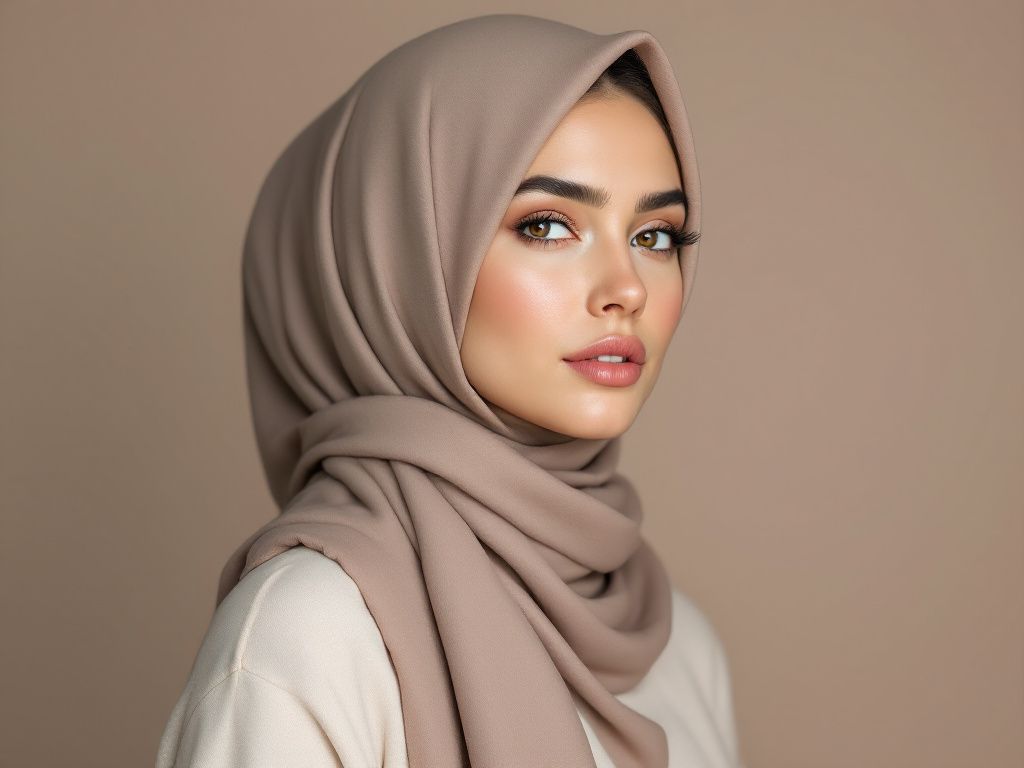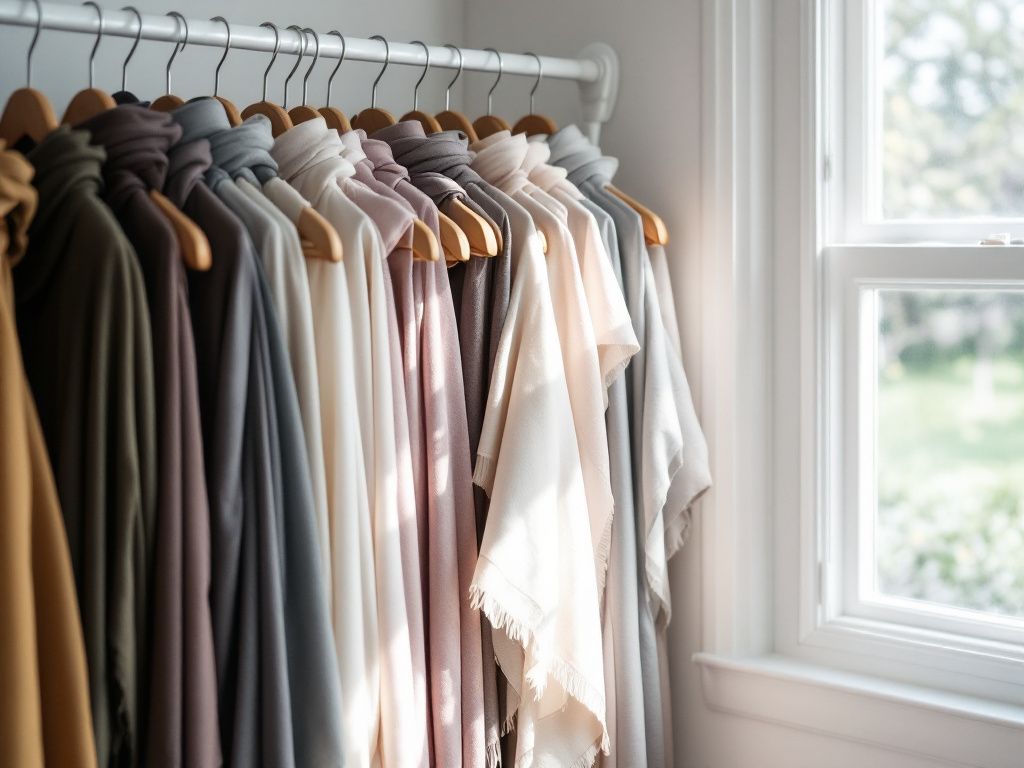Secure Style Methods: No-Slip Solutions for Every Day

**Hijab slipping problems? We’ve all been there.** You find yourself constantly adjusting, shifting pins, and retying, when all you want is a carefree day, not a game of hijab hide-and-seek. Let’s chat about practical hijab tips that actually work and how you can make yours stay put all day without a second thought.
So here’s the heart of the issue: whether you’re heading to work, running errands, or just hanging out with friends, nobody wants their hijab to budge every few minutes. It’s distracting, uncomfortable, and frankly, it has us all wishing for a magic solution. While it might not be magic, there are some fantabulous things you can try that really make a difference, trust me on this one.
Get to Know Your Fabrics
First things first, let’s talk about fabrics. That’s where a lot of the magic lies (or the candy-coated frustration).
Natural vs. Synthetic
Natural fabrics like cotton and linen tend to stay more secure. Why? Essentially, they’re less slippery. It’s like choosing the right pair of shoes for a dance class—smooth satin looks stellar but you’re more likely to trip than twirl. Synthetics such as satin and chiffon can turn into a slippery slope. They’re beautiful, sure, but they require more effort to make them stay in place.
Quick Fabric Rundown:
- Chiffon: Lightweight but can slip. Pair it with a textured cap or under-scarf.
- Cotton: Great grip. Perfect for those ‘no-fuss’ days.
- Jersey: Stretchy, stays put, and doesn’t need pins if draped well.
Layer Wisely
Moving on, let’s chat about layering. It’s more than a fashion statement.
Under-scarfs & Caps
These nifty pieces are game-changers. They’ve earned their place in a solid hijab wardrobe for making everything stay right where it should. No more slipping on a bad hair (or hijab) day when you’ve got a trusty under-scarf as your secret weapon.

- Under-scarf: Grab a cotton or ribbed one. They grip without gripping your soul. Avoid satin here since it can make matters worse.
- Cap: If you want something lighter, a textured cap can do the trick.
And hey, remember, you don’t have to choose one forever. Mix them up depending on the day’s vibe or occasion. Under-scarf today, cap tomorrow.
The Beauty of Pins
Alright, let’s get a few words in about pins. Ah, these little ninjas of the hijab world.
Types of Pins and When to Use Them
Pins are a bit like relationships—choose wisely, they’ve got your back.
- Straight Pins: Great for securing edges discreetly. Ideal for when you want that ‘invisible helper’ look.
- Safety Pins: This classic is best for stronger holds, especially with thick fabric. Keep it for heavier styles like cotton.
- Magnets: These are my go-to for delicate fabrics. They hold without leaving marks or holes. A must-have.
- Snap Hijab Clips: Not as common but excellent for quick fixes. Easy and reusable.
Set that “pin-in-one-place-and-don’t-move” mentality aside for a moment and ponder how these pins can save the day. When pinned correctly, your hijab can withstand the most hectic of days.
How to Pin Effectively
Pro-tips for using these sleek tools?
- Quiz Time: Horizontal > Vertical. It’s like having a greater grit-potential aligned crosswise. Sounds technical but easy to remember.
- Don’t Over Pin: Space them logically. Too many and you’ve become the human campus for a pin attraction. Your hijab will still slip and you’ll possibly ruin its flow.
Pay Attention to Your Styles
Let’s get into styling a bit, shall we? The science of tucking and wrapping is quite charming once you know its secrets.

Do’s and Don’ts of Hijab Styling
**Make structure your friend.** Structured folds and tucks create friction points—they hold everything together harmoniously. It’s like engineering, but for fashion.
- Do: Try the ‘Turban Style’ for a wrapped, stay-secure look.
- Don’t: Use too much loose draping on slippery bases unless you intend on wearing a dozen pins.
Here’s a structural trick: Try an ‘inner tuck’ by folding part of the hijab underneath, anchoring before draping.
Accessories: Your Secret All-Day Ally
Accessories aren’t just an addition but an integration into the hijab world.
Clips and Bands
You ever thought about utilizing tools like small hair clips or decorative bands within your hijab setup? They serve the same purpose as survey stakes—keeping everything in line.
- Decorative Clips: Secure and accessorize simultaneously.
- Loop Knot Bands: These are excellent for peeking through get-togethers.
A slight cinch from a band here and there creates additional friction and security.
Mind the Weather
Let’s talk about nature’s role in our style story. Certain days inspire us to dance in rain; others—humidity hits. Every weather type throws its own set of hijab conundrums.
How Weather Influences Hijab Styling
When it’s blistering hot, lighter materials and breathable layers are your friends. Worried about cold snaps? Go for thicker textures while keeping them secure. In both cases, balance comfort with functionality.
It’s often the small things—like a strategically placed cotton pad under a silky scarf on hot days—that save the day from sweat slip-offs. Seems subtle, yet significant.

Time-tested Daily Routine for No-Slip Hijab
Every hijab connoisseur knows: consistency is key. Develop a habit that’ll hold up through any hustle-and-bustle day.
- Prep the Night Before: Lay out fabrics and required accessories.
- Set a Foundation: An under-scarf/base ensures a ready-to-roll hijab morning.
- Pin it Like a Pro: Tack down edges, anchor securely at key points.
- Redirect Your Locks: Hair not flowing in vigorous protest aligns your style with predictability.
- 5. **Finish with Style: Employ structural tricks, choose accessories.
Staying ahead of tasks and setting things out in advance rather than struggling when you’re one foot out the door saves a heap of stress.
Common Mistakes to Avoid
Let’s not tiptoe around it. We all make mistakes; sometimes it’s best to spotlight, learn, and adjust course.
- Going overboard with pins. Less is truly more, calculated and coordinated placements ace any look.
- Ignoring breathability. Choosing functional materials over trends pays dividends in comfort.
- Neglecting the foundation layer. Even the most secure pins won’t save a poorly chosen base.
Reflecting on your style day-to-day enriches understanding and comfort with your hijab approach.
Final Thoughts
After all this casual chit-chat, you’ve got a collection of useful hijab tips spanning fabrics to pins and beyond. From trying an under-scarf on a troublesome morning to reworking a simple pin placement, these strategies make staying secure all-day ironically seem less of a task and more a lifestyle.
Approaching each new day with confidence in your hijab style begins with simple, free-flowing solutions—the kind you adapt as second nature. Give it a try, embrace your unique style journey, staying effortlessly secure every step of the way.
Frequently Asked Questions
How often should I wash my face mask to prevent maskne?
To prevent maskne, it is crucial to wash your face mask regularly. For fabric masks, wash them after every use, similar to how you would wash your underwear[2][3][4]. Disposable masks should be tossed after each use to prevent the buildup of bacteria and other contaminants[3][5>.
What type of skincare products are best for preventing maskne?
For preventing maskne, use skincare products that are oil-free or noncomedogenic. These products, such as gentle cleansers, moisturizers, and sunscreens, help prevent clogged pores and reduce the risk of acne. Look for products containing salicylic acid or benzoyl peroxide for their acne-fighting properties[1][3][4>.
How can I reduce friction and irritation caused by wearing a face mask?
To reduce friction and irritation, choose a mask that fits well and is made from breathable fabrics like cotton or bamboo. Loosen the mask straps, use pads under the straps, or consider a headband-style mask to minimize friction. Taking brief breaks to remove the mask and allow your skin to breathe can also help[2][3][5>.
What are some additional tips to prevent maskne while wearing a face mask?
In addition to regular mask washing and using the right skincare products, avoid touching your face, skip makeup or use noncomedogenic makeup, and moisturize your skin to keep it hydrated. Also, limit the use of active ingredients like retinol or benzoyl peroxide during the day when wearing a mask, and consider using a topical antimicrobial cream to prevent bacterial buildup[1][3][4>.
References






